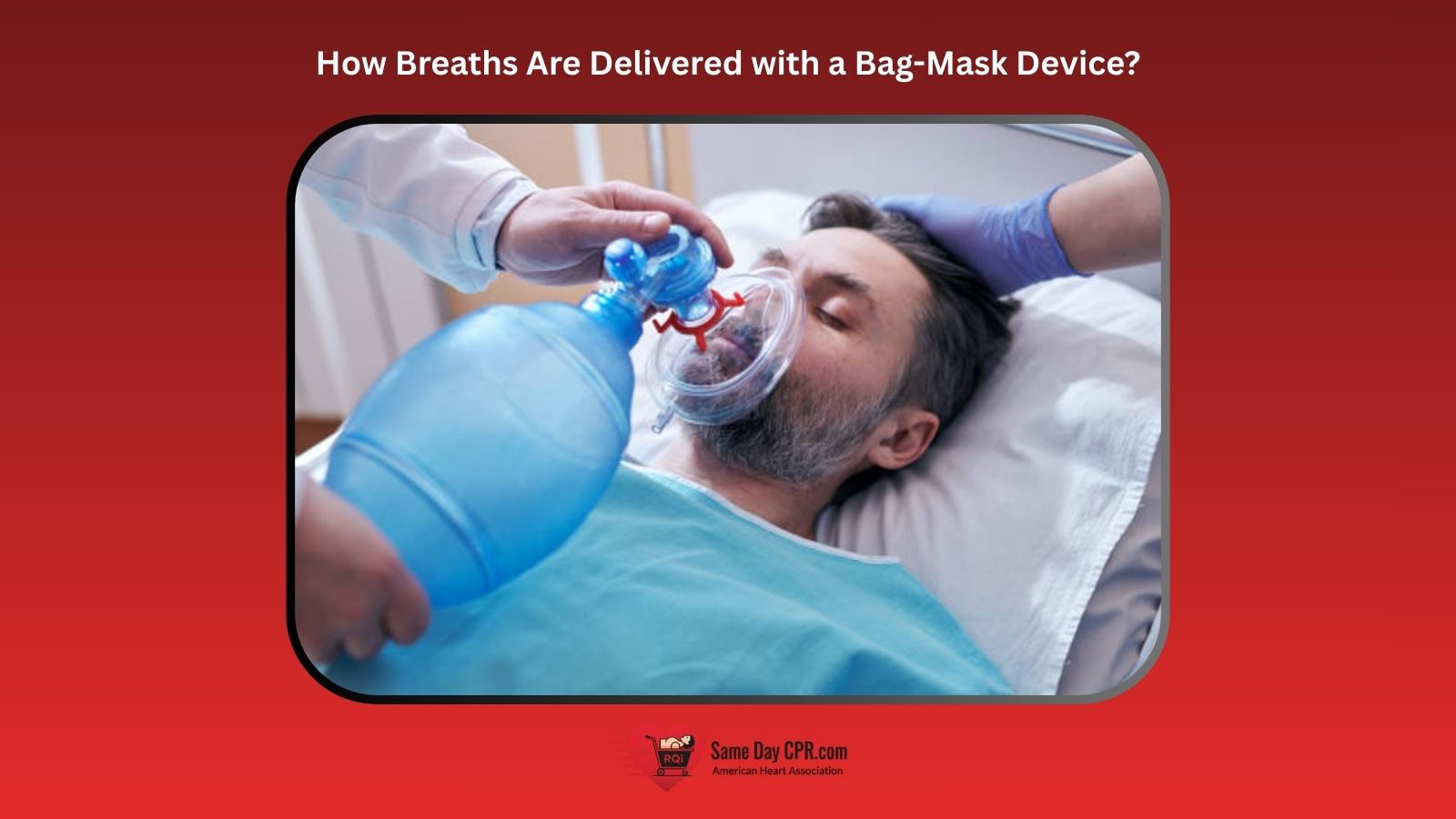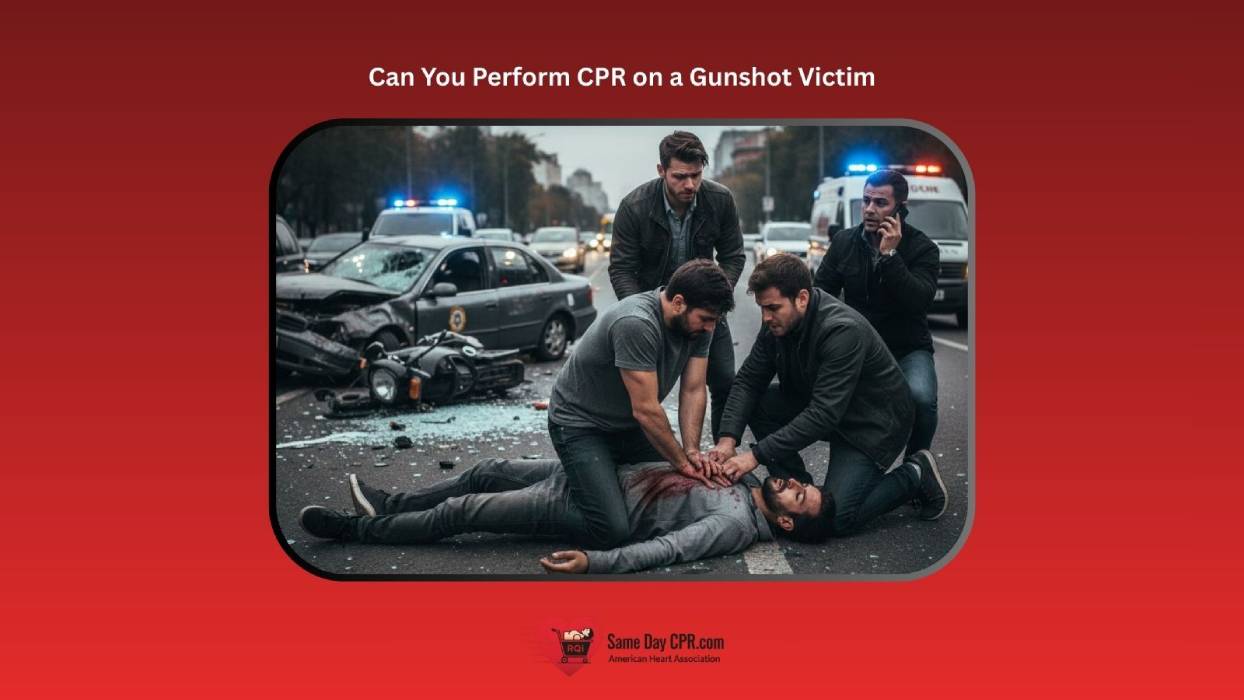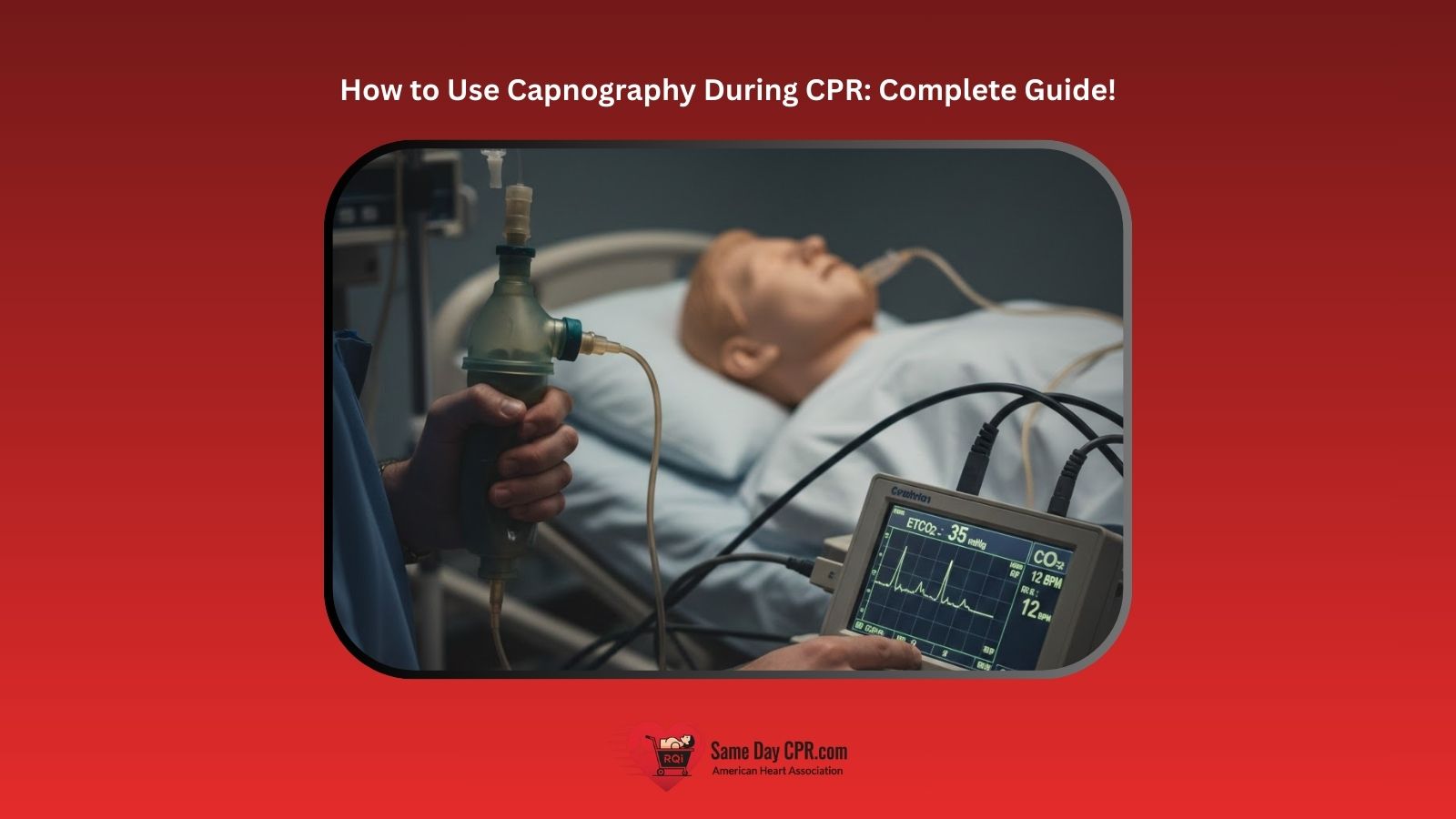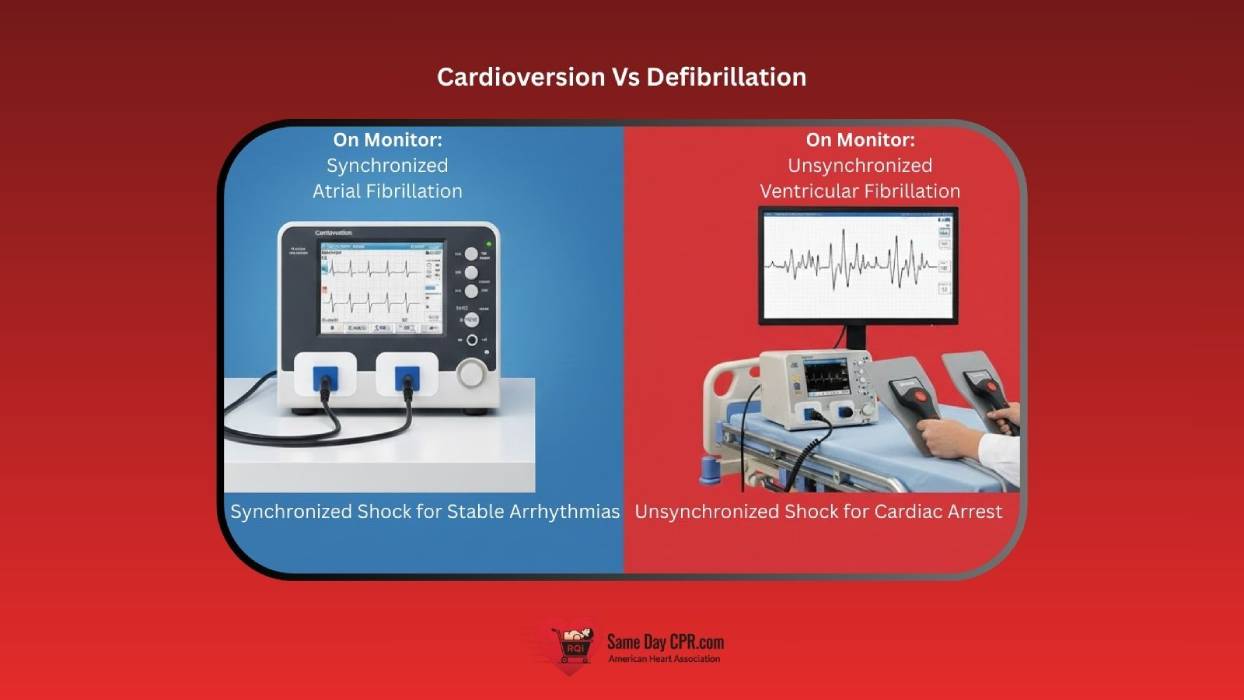Breathing with a bag-mask device (ambu bag) is a simple, hands-on way to help someone who isn’t getting enough air. A trained rescuer places a mask over the person’s nose and mouth and seals it while squeezing a small bag attached to the mask. Each squeeze sends a breath into the lungs, and releasing the bag allows air to flow back in from the surrounding environment. The whole process relies on a tight seal, proper head position, and a steady rhythm so the person receives enough air without overinflating the lungs. This method is often used in emergencies, in waiting rooms, and during CPR training because it can be set up quickly and used even when a full medical setup isn’t available.
If you’re learning CPR or bag-mask ventilation, follow your training manual or the guidance from local emergency services, as recommendations can vary by age group and situation.
Types of Bag Valve Mask Device
The bag valve mask device is primarily categorized into two types. They are listed below.
1. Self-Inflating Bags
Self‑inflating bags are handy tools for first aid and emergencies. They puff up on their own when you squeeze, so you can give breaths to someone who isn’t breathing well. They’re easy to use, work in many situations, and don’t need a separate source of power. The bag fills with air and can be connected to a mask to help protect the patient’s face while you assist breathing.
2. Flow-Inflating Bags (Anesthesia)
Flow-inflating bags, also called anesthesia bags, help doctors and nurses breathe for patients who can’t breathe well on their own. They are soft and easy to squeeze, delivering air or a mix of gases whenever needed. The bag fills up with each squeeze and slowly empties, so the team can control breaths and keep the patient safe during surgery. It feels familiar and calm to use, guiding care with careful, steady hands.
When Are The Bag Mask Devices Needed?
Bag mask devices are essential tools used to help people breathe when they can’t breathe on their own. They’re important in different emergencies; they are listed below.
1. Cardiac Arrest
When someone’s heart stops beating, a bag mask device helps you breathe for them. It delivers air into the lungs quickly and consistently, which keeps blood moving through the body and helps save brain cells. The bag mask is used by caregivers right away, often along with chest compressions. It’s a simple tool that can make a big difference while waiting for more advanced help to arrive.
2. During Anesthesia
During surgery, a bag mask device helps the patient breathe when the anesthesia team is not ready or when the airway needs extra support. It creates a steady flow of air and keeps the lungs inflated, which helps the patient stay comfortable and safe. The device is used carefully, with close watching of the patient’s breathing and oxygen levels, until a more secure airway is placed or the patient can breathe on their own again.
3. Neonatal Resuscitation
In newborn emergencies, a bag mask device can jumpstart breathing right after birth. It helps inflate the baby’s lungs and delivers enough oxygen to get the heart beating normally. Small, gentle breaths and careful monitoring are essential because babies require a delicate touch. The bag mask is usually part of a coordinated team effort to support both breathing and circulation in these critical moments.
4. Drug Overdose
When someone overdoses, breathing might slow or stop. A bag mask device can give breaths to keep oxygen flowing to the brain and other organs while medical help is on the way. It’s important to use it with great care and to follow instructions from trained responders, since the amount of air and the rate of breaths need to match the person’s condition. The goal is to support breathing without causing additional harm.
5. Transport of Clinically Ill Patient
Moving a very sick patient from one place to another can be tricky, and a bag mask device helps during the ride. It provides a reliable way to keep oxygen flowing if the patient’s breathing becomes unstable. Staff monitor the patient closely and adjust the device as needed to match their changing needs. Using the bag mask in transport helps ensure the patient stays as safe and comfortable as possible until they reach the next level of care.
Steps to Delivering Breaths Using a Bag-Mask Device
Breathing for the patient with a bag-mask device is simple and safe when you stay calm, follow the steps closely, and keep the patient comfortable.
1. Preparation and Safety
Before you start, confirm that assisted ventilation is appropriate (e.g., arrest or inadequate breathing) and ensure the scene is safe. Gather and check the BVM, mask, and oxygen reservoir, and attach the oxygen supply if available. Have suction ready and put on PPE. Position the patient supine on a firm surface and think ahead about potential airway management needs. A quick equipment check helps prevent delays during ventilation, and it’s important to know what is the correct volume of air to deliver during BVM ventilation to provide effective breaths without causing harm.
2. Create and Maintain an Open Airway
To keep air moving into the lungs, position the head to align the airway unless you must protect the spine. Use the head-tilt/chin-lift for non-traumatic cases, or the jaw-thrust if spinal injury is suspected. Clear obstructions by suctioning secretions or debris while maintaining airway control. The goal is a patent, unobstructed passage for breaths.
3. Attach and Assemble the BVM
Connect the bag to the mask and, if you have one, to the oxygen reservoir. Ensure a good facial seal; two hands usually yield the best seal for adults, with one hand shaping the seal and the other squeezing the bag. A one-handed method (with an E-C grip) can work for solo rescuers. If oxygen is connected, set the flow to 15 L/min or follow local guidance. A secure setup prevents leaks and maximizes effective ventilation.
4. Ventilation Technique
Ventilate at an appropriate rate and volume so the chest rises visibly without forcing air into the stomach. For adults, aim for roughly 10–12 breaths per minute (about one every 5–6 seconds). Deliver each breath smoothly, ensure the chest fully rises, and allow it to recoil completely between breaths. If the chest doesn’t rise, reassess the seal and airway position, and clear obstructions if necessary. Avoid over-ventilating, which can cause gastric inflation and other complications.
5. Monitoring and Adjustments
With each breath, observe the visible chest rise and check airway patency. If available, monitor oxygen saturation and capnography to measure ventilation efficiency. Assess circulation signs like pulse and skin color, and be ready to perform chest compressions if a cardiac arrest protocol calls for it. Ongoing assessment helps determine whether to continue ventilation or escalate treatment.
6. Safety Considerations and Contraindications
Maintain a tight seal to prevent leaks, and adjust technique for facial trauma or airway injuries. If a cervical spine injury is possible, minimize neck movement by using the jaw-thrust technique. For pediatric patients, use appropriately sized masks and adapt rates and volumes to their physiology. Always follow local guidelines and adjust for the patient’s age and condition.
When Should You Switch to an Advanced Airway from a Bag-Mask Device?
Switching from a bag-mask device to an advanced airway is a crucial choice determined by the patient’s condition and how they respond to initial ventilation. You should consider moving to an advanced airway when :
- Inadequate Ventilation: If a bag-mask device does not provide enough breaths, switch to an advanced airway right away. This helps keep the patient’s blood oxygen level steady and reduces the risk of harm.
- Patient Condition Worsens: When the patient’s overall state gets worse despite bag-mask use, move to a more secure airway. A better airway helps support breathing and stabilizes the patient.
- Procedural Requirement: Certain procedures require a more secure airway to be done safely. Use an advanced airway to complete the task correctly and protect the patient.
- Presence of Airway Trauma or Obstructions: If there is an injury or blockage in the airway, a more controlled airway is often needed. This lowers the chance of further harm during breathing support.
- Prolonged Ventilation Required: If the patient will need help breathing for a longer time, switch to an advanced airway. It is easier to manage and keeps ventilation consistent.
Common Mistakes to Avoid in the Bag Mask Device
If you use a bag-mask device, stay focused and check each step. This helps keep breathing steady and prevents harm.
1. Airway Obstruction and Poor Airway Positioning
- Problems: The airway can get blocked or sit in the wrong place, stopping breathing.
- Tips To Avoid: Clear the airway first, adjust the head and neck to open the airway, and keep the airway aligned with the chest.
2. Poor Mask Seal
- Problems: Air leaks keep breaths from reaching the lungs.
- Tips To Avoid: Place the mask snugly over the nose and mouth, use a two-person technique if possible, and check for leaks around the edges.
3. Incorrect Hand Placement and Pressure
- Problems: Wrong hands or too much force can injure skin or fail to deliver breaths.
- Tips To Avoid: Use the correct grip and finger position, press gently but firmly, and switch rescuers if fatigue sets in.
4. Over Ventilation and Hyper Ventilation
- Problems: Giving breaths too fast or too deeply can raise pressure and harm the patient.
- Tips To Avoid: Use controlled, steady breaths at a slow rate, and avoid forceful squeezes.
5. Fail To Recognize Obstruction
- Problems: Missing a blocked airway delays care and can worsen outcomes.
- Tips To Avoid: Look for signs of obstruction, reposition the head, and consider suction or advanced help if needed.
6. Inadequate Tidal Volume
- Problems: Breaths are too small to fill the lungs properly.
- Tips To Avoid: Deliver breaths that fill the chest, monitor rise and fall, and adjust technique as needed.
Effective Use of Bag-Mask Devices Across Settings
In short, breathing with a bag-mask device is a practical, lifesaving skill that can make a real difference in emergencies. By keeping the airway open, delivering steady breaths, and staying calm, caregivers can support someone until more advanced help arrives. Remember to follow proper steps, adjust for the person’s age, and seek training to use the device safely and effectively. With practice and clear guidance, you’ll be better prepared to act confidently when every moment counts.








